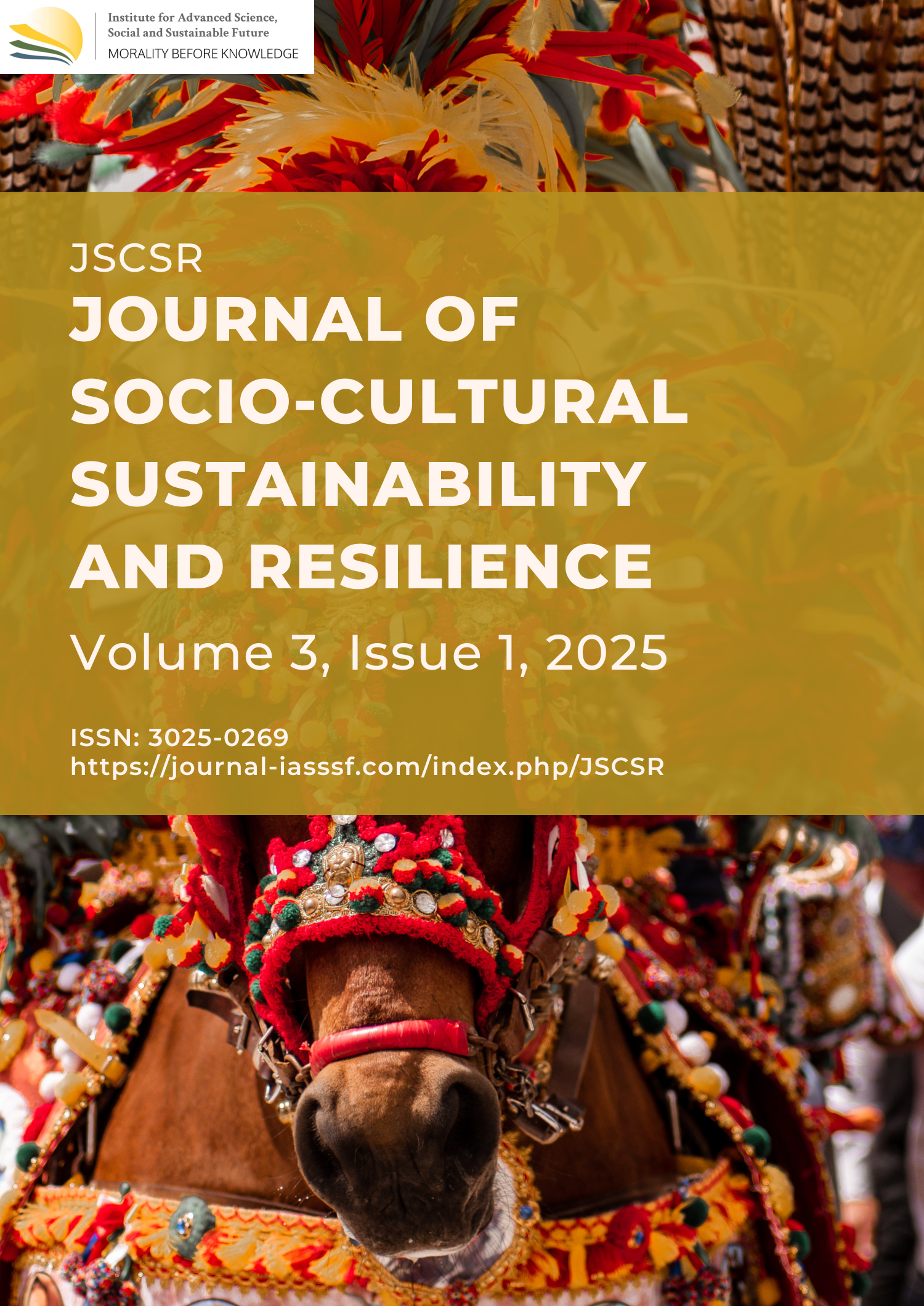From static to social: Museum-date and the reimagining of urban museums in the disruption era
DOI:
https://doi.org/10.61511/jscsr.v3i1.2025.1933Keywords:
museum-date, disruption era, urban tourismAbstract
Background: This study addresses the shifting public perception of museums in the era of disruption, particularly among urban communities. One manifestation of this shift is the emergence of the museum-date phenomenon, in which museum visits are reimagined as interactive, experiential, and lifestyle-oriented activities. This study aims to investigate how this transformation reflects broader changes in how urban society engages with tourism and cultural institutions. Methods: A qualitative ethnographic method was applied to explore this phenomenon. Data collection involved direct observation, in-depth interviews with key and additional informants, and documentation techniques. Fieldwork was conducted at the National Museum of Indonesia and Lawang Sewu to gather insights into the practices and perceptions surrounding museum-dates in an urban context. Findings: Findings indicate that the disruption era has significantly influenced the dynamics of museum engagement. The concept of the museum-date is not only shaped by disruptive innovations—such as digital culture and social media—but also by a tension with conventional museum frameworks. Visitors are increasingly transforming their museum visits into personalized and performative experiences, reflecting broader changes in urban lifestyles and consumer behavior. The museum-date represents a repackaging of tourism experiences that aligns with the sensibilities of the digital and disruption-driven generation. Conclusion: The study concludes that the museum-date trend signifies a reconfiguration of museum functions in response to disruption-era influences, offering new potential for museums to remain culturally relevant and socially integrated in urban life. Novelty/Originality of this article: This article offers a novel contribution by examining the museum-date as a cultural response to the era of disruption, highlighting how innovation and social media have reshaped urban tourism and museum engagement in Indonesia. It provides a new lens to understand how urban society adapts cultural spaces to meet evolving social needs.
References
Akbar, A. (2019). From archaeological artefact to unlimited heritage concept: Redefining museum collection in the disruption era. Wacana, 20(2), 352–374. https://doi.org/10.17510/wacana.v20i2.727
Biagi, F. (2020). Henri Lefebvre’s Urban Critical Theory: Rethinking the City against Capitalism. International Critical Thought, 10(2), 214–231. https://doi.org/10.1080/21598282.2020.1783693
Choi, B., & Kim, J. (2021). Changes and challenges in museum management after the COVID-19 pandemic. Journal of Open Innovation: Technology, Market, and Complexity, 7(2). https://doi.org/10.3390/joitmc7020148
Cornellia, A. H., & Hermawan, H. (2020). Upaya Meningkatkan Angka Kunjungan Museum Melalui Social Media Marketing – Studi Pendahuluan. Jurnal Kepariwisataan Indonesia : Jurnal Penelitian Dan Pengembangan Kepariwisataan Indonesia, 14(1), 1–8. https://doi.org/10.47608/jki.v14i12020.1-8
Crum, E. (2020). The Modernization of Museum Tools: Designing Technology with Sustainability in Mind. MCN Publications.
Diwyarthi, N. S. (2019). Tourists Satisfaction towards Museum in Tourism Industry : A Perspective in Postmodernism.
Eklund, L. (2020). A shoe is a shoe is a shoe: Interpersonalization and meaning-making in museums – Research findings and design implications. International Journal of Human–Computer Interaction, 36(16), 1503–1513. https://doi.org/10.1080/10447318.2020.1767982
Falk, J. H. (2009). Identity and the Museum Visitor Experience. Left Coast Press, Inc.
Foley, M., & McPherson, G. (2000). Museums as leisure. International Journal of Heritage Studies, 6(2), 161–174. https://doi.org/10.1080/135272500404205
Gall-Ely, M. Le, Urbain, C., Bourgeon-Renault, D., Gombault, A., & Petr, C. (2007). Free admission to museums and monuments: an exploration of some perceptions of the audiences. International Journal of Nonprofit and Voluntary Sector Marketing, 13(1), 57–72. https://doi.org/10.1002/nvsm.307
Geertz, G. (1973). The Interpretation of Cultures. Basic Books.
Gurel, E., & Nielsen, A. (2018). Exploring the Visitors’ Perceptions and Experiences of Museums. In Tourism, Hospitality and Event Management. Springer International Publishing. https://doi.org/10.1007/978-3-319-78553-0_10
Hendrik, H. (2020). Tidak Ada Waktu: Studi Tentang Alasan Tidak Mengunjungi Museum. Kebudayaan, 15(1), 27–40. https://doi.org/10.24832/jk.v15i1.272
Khasali, R. (2017). Disruption. Gramedia.
Kumoro, N. B., Martias, I., Ismanto, M., Kewuel, H. K., Saifullah, A. A., & Egidyah, J. M. (2020). Reading the Museum Angkut: Cultural Space Production and Exhibition Narrative. Sosiohumaniora, 22(3), 382. https://doi.org/10.24198/sosiohumaniora.v22i3.26956
Lefebvre, H. (1991). The Production of Space. Blackwell.
Miles, M. B., & Huberman, A. M. (1994). Qualitative data analysis: An expanded sourcebook (2nd ed.). SAGE Publications.
Phillippi, J., & Lauderdale, J. (2018). A guide to field notes for qualitative research: Context and conversation. Qualitative Health Research, 28(3), 381–388. https://doi.org/10.1177/1049732317697102
Renjith, V., Yesodharan, R., Noronha, J. A., Ladd, E., & George, A. (2021). Qualitative methods in health care research. International Journal of Preventive Medicine, 12, 20. https://doi.org/10.4103/ijpvm.IJPVM_321_19
Ross, I. (2018). The museum as a dating venue: Couples in the Madhya Pradesh Tribal Museum in Bhopal, India. Museum and Society, 16(1), 72–87. https://doi.org/10.29311/mas.v16i1.2459
Russo, A., Watkins, J., Kelly, L., & Chan, S. (2006, December). How will social media affect museum communication? Paper presented at the Nordic Digital Excellence in Museums (NODEM 06), Oslo, Norwa.
Tomaszewski, L. E., Zarestky, J., & Gonzalez, E. (2020). Planning qualitative research: Design and decision making for new researchers. International Journal of Qualitative Methods, 19, 1–11. https://doi.org/10.1177/1609406920967174
Walsh, C. (2012). Anthropology and the commodity form: The Philadelphia Commercial Museum. Critique of Anthropology, 32(3), 223–240. https://doi.org/10.1177/0308275X12449100
Xu, H., Li, Y., & Tian, F. (2025). Contrasting physical and virtual museum experiences: A study of audience behavior in replica-based environments. Sensors, 25(13), 4046. https://doi.org/10.3390/s25134046
Downloads
Published
How to Cite
Issue
Section
Citation Check
License
Copyright (c) 2025 Tuffana Farasabila, Prihandoko Sanjatmiko

This work is licensed under a Creative Commons Attribution 4.0 International License.
















